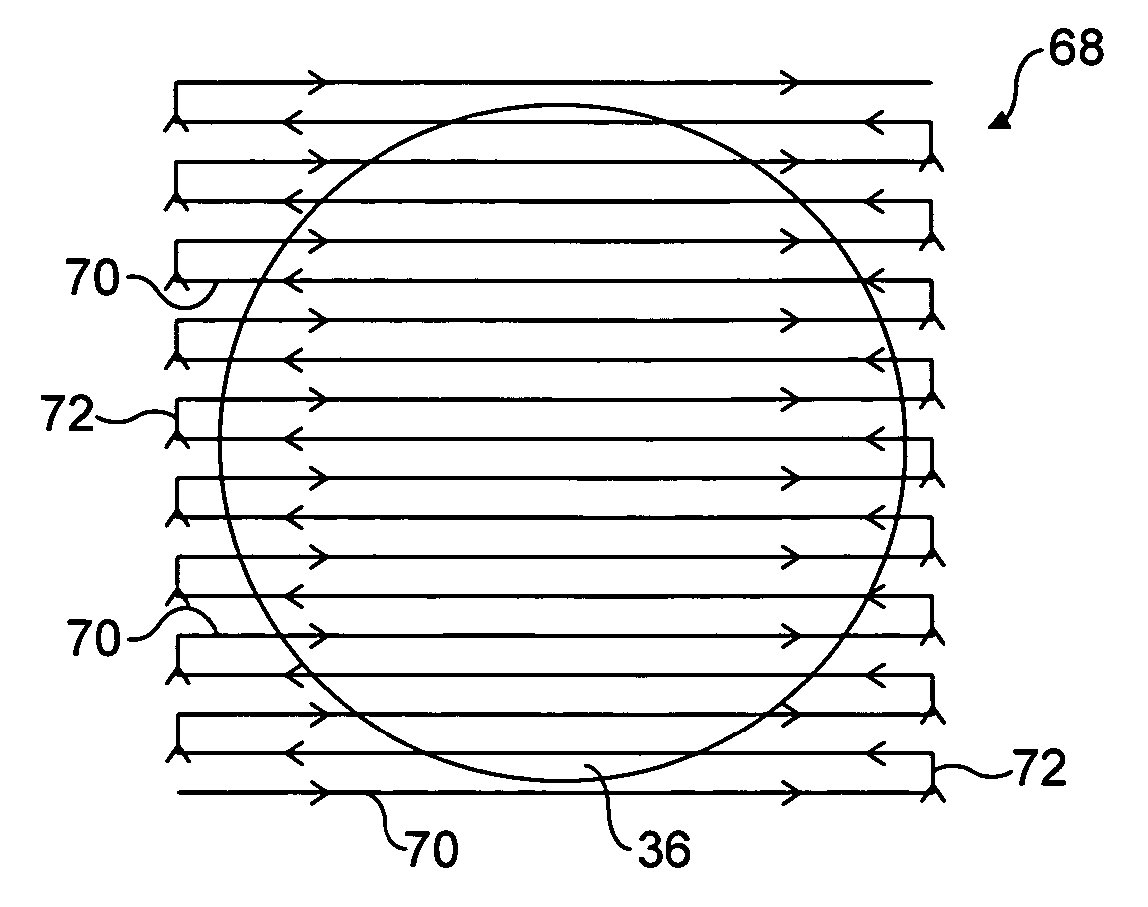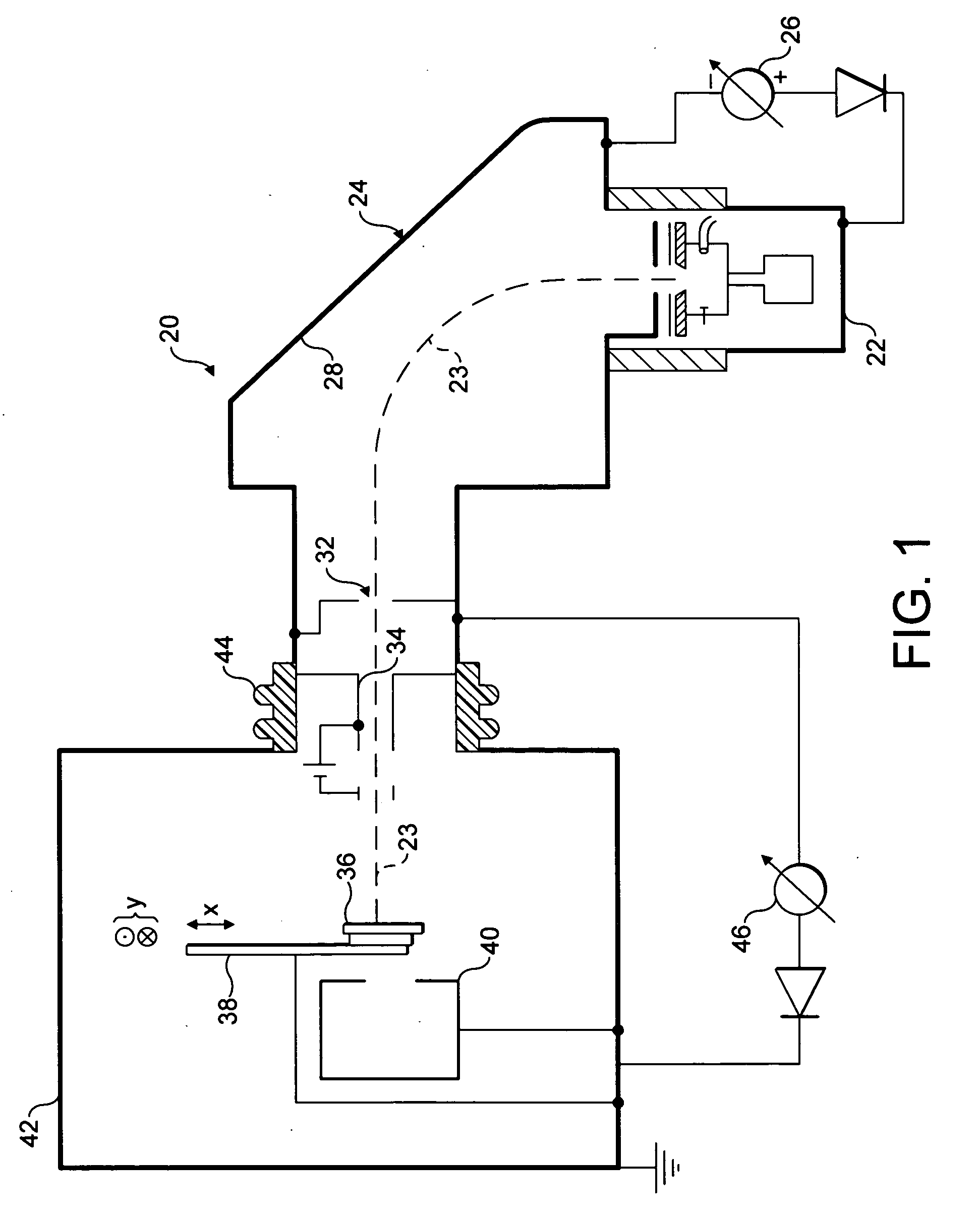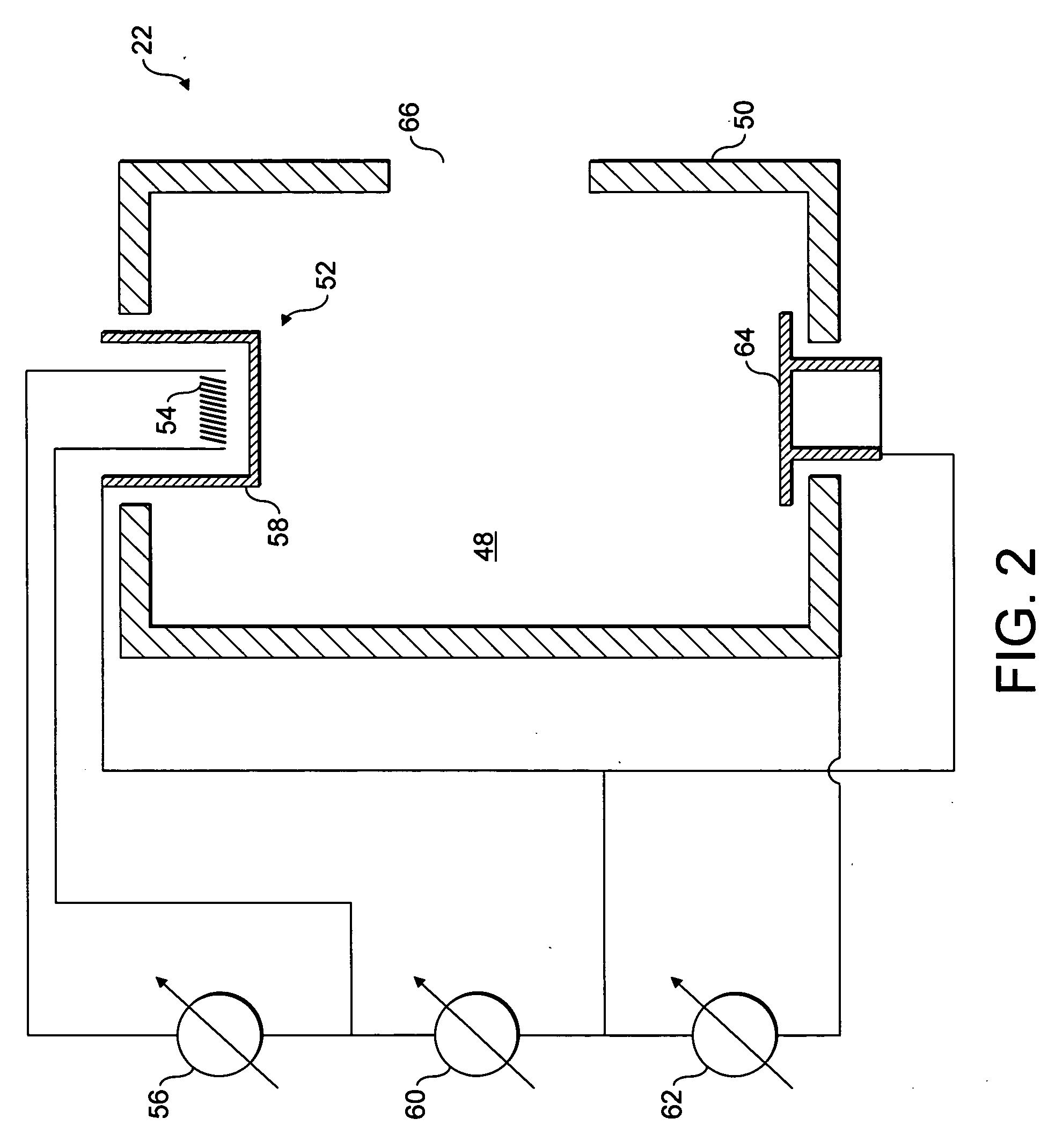Ion implantation
a technology of ion beams and ion beams, which is applied in the field of ion beams, can solve the problems of inability to achieve the above-mentioned precautions, inability to fix the ion beam, so as to reduce the cooling effect, increase the energy, and increase the heating
- Summary
- Abstract
- Description
- Claims
- Application Information
AI Technical Summary
Benefits of technology
Problems solved by technology
Method used
Image
Examples
Embodiment Construction
[0044]FIG. 1 shows a typical ion implanter 20 comprising an ion beam source 22 such as a Freeman or Bernas ion source that is supplied with a pre-cursor gas for producing an ion beam 23 to be implanted into a wafer. The ions generated in the ion source 22 are extracted by an extraction electrode assembly. The flight tube 24 is electrically isolated from the ion source 22 and a high-tension power supply 26 supplies a potential difference therebetween.
[0045] This potential difference causes positively charged ions to be extracted from the ion source 22 into the flight tube 24. The flight tube 24 includes a mass-analysis arrangement comprising a mass-analysing magnet 28 and a mass-resolving slit 32. Upon entering the mass-analysis apparatus within the flight tube 24, the electrically charged ions are deflected by the magnetic field of the mass-analysis magnet 28. The radius and curvature of each ion's flight path is defined, through a constant magnetic field, by the mass / charge ratio ...
PUM
 Login to View More
Login to View More Abstract
Description
Claims
Application Information
 Login to View More
Login to View More - R&D
- Intellectual Property
- Life Sciences
- Materials
- Tech Scout
- Unparalleled Data Quality
- Higher Quality Content
- 60% Fewer Hallucinations
Browse by: Latest US Patents, China's latest patents, Technical Efficacy Thesaurus, Application Domain, Technology Topic, Popular Technical Reports.
© 2025 PatSnap. All rights reserved.Legal|Privacy policy|Modern Slavery Act Transparency Statement|Sitemap|About US| Contact US: help@patsnap.com



